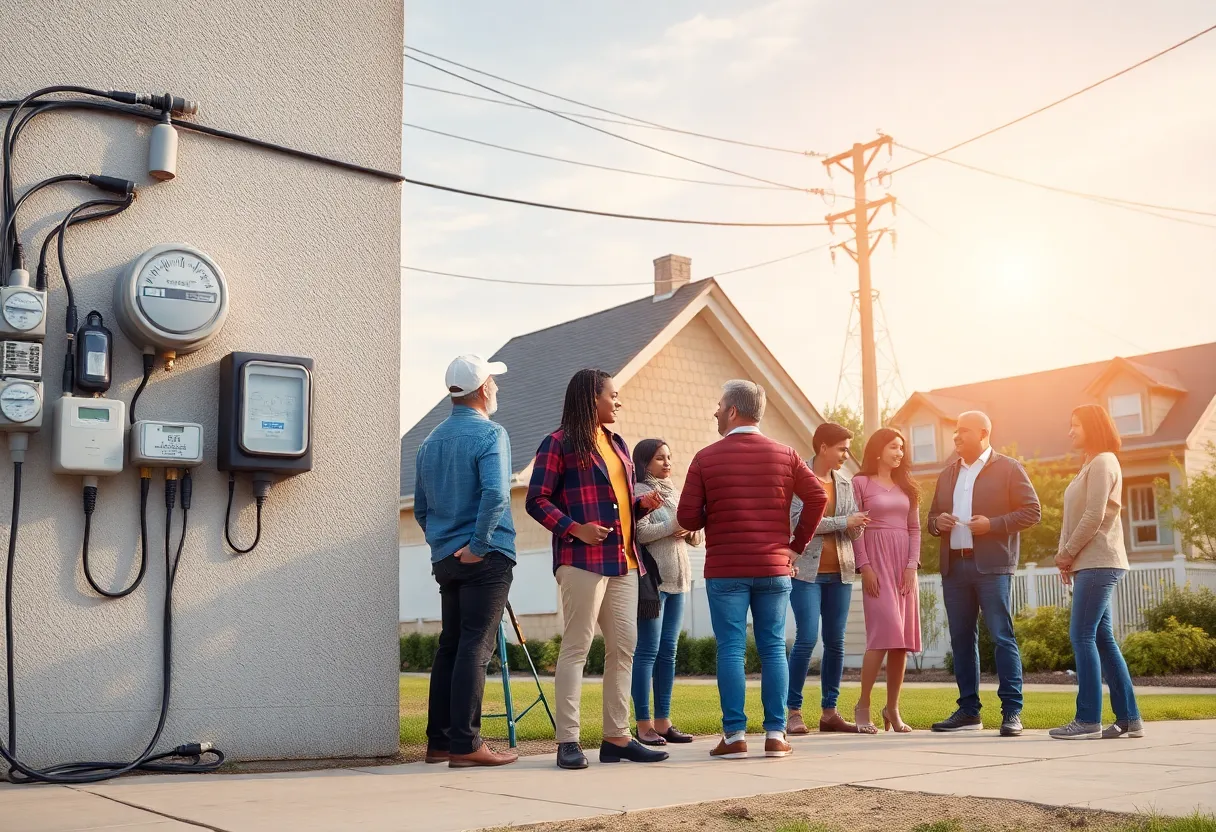News Summary
Residents of Pennsylvania are set to face steep increases in electricity bills in 2025, with some experiencing hikes of over 30%. These increases stem from rising electricity demand, utility infrastructure challenges, and retail pricing adjustments approved by the Pennsylvania Public Utility Commission. PECO customers, for instance, will see their bills rise by an estimated 10%, with further increases slated for 2026. As electricity demand continues to surge, residents are urged to explore energy efficiency options and engage in local discussions about their utility costs.
Pennsylvania residents are facing steep increases in electricity bills in 2025, with some areas experiencing rate hikes of more than 30%. These adjustments correspond with significant shifts in energy demand and challenges in the state’s infrastructure that are driving costs higher.
For example, PECO residential customers who use about 700 kilowatt hours each month are seeing their bills rise by 10%, or approximately $13.58, in 2025. An additional increase of $2.70 is anticipated for 2026. These changes are the result of retail price adjustments that were approved by the Pennsylvania Public Utility Commission (PUC) in December 2024.
Impact of Rising Demand and Infrastructure Challenges
The rising electricity consumption, particularly fueled by the growth of data centers, electric vehicles, and electric heat pumps, is expected to contribute to ongoing price increases. While Pennsylvania is recognized as the largest exporter of electricity in the United States, much of the generated electricity exits the state due to the shared grid management operated by the Pennsylvania-Jersey-Maryland (PJM) Interconnection.
PJM manages electricity flow across parts of 13 states, and utilities are required to meet future demands through a capacity auction market. In the 2025-2026 capacity auction, prices soared over 800% compared to the previous year, leading to tens of billions of dollars in additional costs for utilities.
Challenges with Energy Generation and Infrastructure
The state is experiencing the retirement of many old generation plants, while advancements in solar and battery-based power sources are often delayed due to a lengthy interconnection queue. Furthermore, utilities have been slow to upgrade their aging infrastructure, resulting in increased costs that consumers ultimately bear.
In December 2024, Pennsylvania Governor Josh Shapiro filed a complaint with the Federal Energy Regulatory Commission (FERC) concerning the rising costs imposed by PJM. This action led to a settlement that adjusted PJM’s price caps downward by 35%, which may provide some relief for consumers.
Energy Efficiency and Consumer Options
In light of these hikes, Pennsylvania residents are encouraged to explore options to lower their electricity bills. Potential strategies include weatherizing homes, installing energy-efficient appliances, and taking advantage of the state’s low-income energy efficiency programs. Residents also enjoy the option of “retail electricity choice,” which allows them to select their electricity generator; however, this can come with the risk of higher rates or binding contracts.
Homeowners may consider the installation of rooftop solar panels, benefiting from net metering and available tax credits. Despite the significant upfront costs, this could offer a cheaper alternative to utility rates for some residents. Third-party solar solutions provide another option for households that qualify, enabling them to benefit from solar power without the full costs of installation.
Consumer Engagement and Legislative Actions
Residents concerned about rising rates can file complaints with the Pennsylvania Public Utility Commission and participate in public hearings to voice their opinions on utility spending. The growing electricity demand driven by applications such as artificial intelligence and online services is expected to persist, impacting future rates.
Community resistance to new energy facilities may pose additional hurdles for the development of projects necessary to meet energy needs, highlighting the importance of community involvement and beneficial agreements. Additionally, proposed bipartisan legislation is seeking to establish a rooftop solar program, targeting unused industrial warehouse rooftops to expand energy generation and potentially reduce costs for consumers.
These developments illustrate the complex interplay of demand, regulatory decisions, infrastructure challenges, and consumer choices shaping the current landscape of electricity rates in Pennsylvania.
Deeper Dive: News & Info About This Topic
- PA Environment Daily
- The Conversation
- Post-Gazette
- The Center Square
- The Cool Down
- Wikipedia: Electricity in Pennsylvania

Author: STAFF HERE PHILADELPHIA WRITER
The PHILADELPHIA STAFF WRITER represents the experienced team at HEREPhiladelphia.com, your go-to source for actionable local news and information in Philadelphia, Philadelphia County, and beyond. Specializing in "news you can use," we cover essential topics like product reviews for personal and business needs, local business directories, politics, real estate trends, neighborhood insights, and state news affecting the area—with deep expertise drawn from years of dedicated reporting and strong community input, including local press releases and business updates. We deliver top reporting on high-value events such as Mummers Parade, Philadelphia Flower Show, and Thanksgiving Day Parade. Our coverage extends to key organizations like the Greater Philadelphia Chamber of Commerce and United Way of Greater Philadelphia, plus leading businesses in telecommunications, food services, and healthcare that power the local economy such as Comcast, Aramark, and Children's Hospital of Philadelphia. As part of the broader HERE network, we provide comprehensive, credible insights into Pennsylvania's dynamic landscape.





